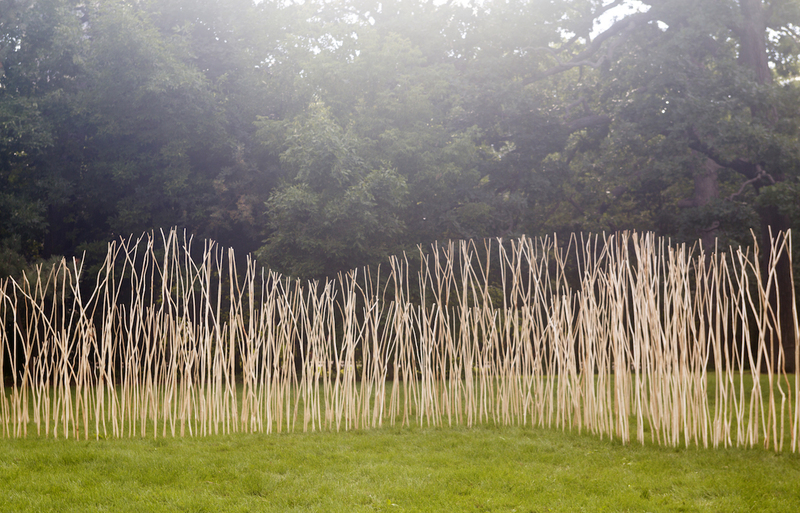Introduction
Artists’ books in Special Collections at UW-Milwaukee Libraries and regional artist Thomas Ferrella share a story about a world we shape, that in turn shapes us. It is a story of beauty, growth and rejuvenation, but it is also a story about carelessness, disruption and loss. Through the lens of a self-taught artist and the perpetually avant-garde medium of book arts, this exhibition attempts to turn the page in the way we approach environmentalism; this page is on what shapes us.
ECO Ephemeral temporarily distorts routines at the University of Wisconsin-Milwaukee (UWM) by marking the paths we traverse and by transforming the green spaces we cross. One who sets foot on the Kenwood Campus might walk on ephemeral hand painted names of endangered species, highlighting Ferrella’s intent to demonstrate how we impact our surroundings. Passing through Ferrella’s serpent-like sculptural installation along Downer Avenue prompts one to consider individual influences on the land. One might also appreciate a painting of Wisconsin wildlife before realizing that the seemingly ubiquitous species are all endangered. Students of life will also find their way to Special Collections on the fourth floor of Golda Meir Library to see one of UWM’s inspiring green solar rooftops and to browse intricate artists’ books that explore environmental considerations from divergent perspectives. The artists’ books included are by regional and internationally acclaimed artists Sarah Bryant, Julie Chen, Eddee Daniel, Fred Hagstrom, Karen Kunc, Denise Levertov and Claire Van Vliet, Regula Russelle and Jody Williams.
This exhibition is nontraditional in that all but one of the works are touchable and none are housed in a gallery. Hopefully it succeeds in breaking the limitations of gallery installations of artists’ books by inviting viewers to experience the books in their entirety. For a few short weeks the exhibition will take root on campus, and after that, it will leave lasting traces through its presence online and in Special Collections. This exhibition also aims to acknowledge the ways in which we can and do make a difference right here at the UWM. My hope is that the overall project aids in dialogues about how we shape Earth, and in turn, how our actions shape us. Ferrella’s installations, the artists’ books in Special Collections and UWM’s sustainability initiatives impose an opportunity to “imagine” new ways for sustaining and revitalizing our world.

